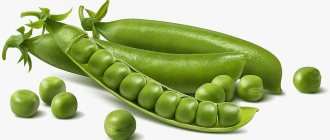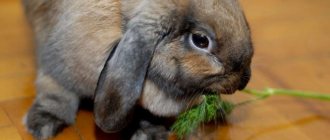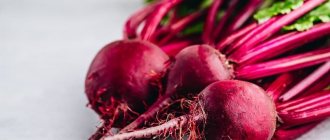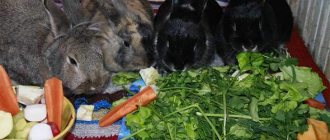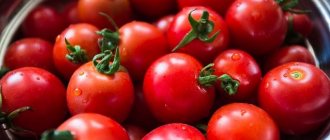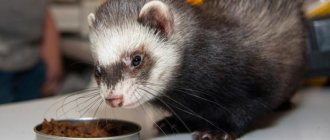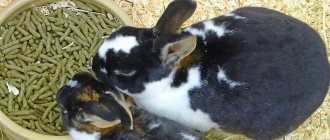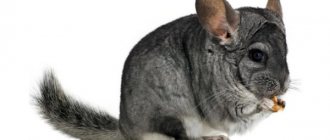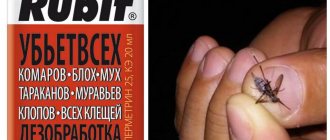0
4189
Article rating
Reducing the mortality rate of rabbits can be achieved by properly organizing their nutrition. It is important to ensure that the diet is balanced and that the animal receives all the necessary vitamins and minerals. Some foods are not recommended for feeding furry rodents. In order not to harm your pet, you need to know what you can give your rabbit and what you cannot.
What foods can you give your rabbit?
Diet Basics
The rabbits' diet consists of green, juicy, roughage, concentrated feed and food waste. Each category has prohibited and permitted products. There are also foods that can be consumed in limited quantities.
All feeds are given in different proportions. The largest share is made up of green feed. From them, rabbits receive vitamins and most of the minerals that are needed for the normal functioning of the body. The category of green feed includes grass, legumes and cereals, soybeans and wild grasses. The most useful cereal crop is corn cobs.
In winter, green feed is replaced with coarse and concentrated feed.
Juicy food fills the rabbits’ body with microelements, protein and fiber. They also contain vitamins. Vegetables and fruits fall into this category.
Coarse – fill the body with fiber and protein. This category includes: straw, grass meal, hay, tree branches.
Concentrated – rich in protein and microelements. This category includes: bran, cake, seeds of legumes and cereals, and various feedstuffs.
Food waste includes table scraps. This could be peels from vegetables or fruits, flour products, cereals, etc. Cleaning should be done carefully so as not to cause problems with the digestive system.
Herbs.
Herbs, like other green foods, are the main supplier of carotene, protein, vitamins, and microelements. When harvesting herbs, it is necessary to take into account that the most useful and nutritious herbs will be those of the first cut, those that have not grown to the point of coarsening the stems, that have grown far from highways and landfills, in other words, they are environmentally friendly. In overgrown grass, the percentage of nutrients is much lower and, on the contrary, the amount of fiber increases sharply. Rabbits digest and assimilate such grass less easily. This, of course, does not mean that you need to give up making hay from the second (third) cutting. It would be a real waste.
Green feed
Green food is grass. It is advisable to give your pets young grass, which has the highest concentration of vitamins and microelements. In addition, young grass is easier to digest.
Not all herbs are suitable for feeding pets. Some plant species not only cause gastrointestinal disorders, but also cause the death of livestock.
Recommended Herbs
From meadow grasses, rabbits can be given alfalfa, oregano, shepherd's purse, acorn grass, vetch, woodlice, phacelia, rapeseed and lupine. Furry animals love chamomile and thistle. Ivan tea, mouse peas, wild chicory, basil, spinach, yarrow, knotweed and leek are useful for rabbits. It is recommended to include squash in your diet.
The most optimal amount of grass in a rabbit's overall diet should be 80-90%.
Rabbits need a balanced diet, so grass is an important component of their diet. Rabbits' favorite treats include: dandelion, plantain, burdock, sow thistle
These herbs will not only not cause harm to the animals’ bodies, but will also be to their taste.
Chamomile is added to the diet in limited quantities. Large amounts of protein-rich alfalfa are given to pregnant and lactating animals. Also harmless to rabbits are sweet clover, tansy, heather, quinoa and sorrel. However, they are not always to the taste of furry rodents. Furry pets are fed with sage.
Green food also includes vegetable tops. Rabbits are given beet and carrot tops, bean pods and pea skins peeled from ripened beans, and plant leaves. Grape leaves and sunflower leaves are also useful for rodents. Pick off sunflower leaves before the plant begins to bloom. Include purslane, rapeseed and hops in the diet.
For some reasons, certain types of green feed can only be fed in limited quantities. Rabbits like wild clover. However, this herb can negatively affect fertility, so its quantity is limited. It is not recommended to feed it to animals of any age more than once every 3 days. Furry rodents should be fed less frequently with potato tops or radish leaves.
Cherry, Siberian hogweed, plantain, amaranth and coltsfoot are included in the diet in limited quantities. These herbs are medicinal. They are used to strengthen the immune system. They are included in the diet in early spring, when the rabbits’ body is most vulnerable. Also include nettle in the diet. However, if plantain and other herbs do not need to be processed, then nettles are doused with boiling water. Young plants are used.
Leaf lettuce is good for rabbits. It is rich in vitamins and minerals. However, salad should be given in limited quantities.
If you add mint to your diet, rabbit meat after slaughter will taste better.
Forbidden herbs
It is strictly forbidden to give rabbits herbs that contain poison. Even those plants in which the concentration of toxic substances is minimal are excluded from the diet.
Celandine, horsetail and loboda can be given in minimal quantities, because these plants can cause serious poisoning and even kill eared animals
The list includes hemlock, marsh whitewing, quinoa, poisonous weed, sedge, spurge, cocklebur and meadow lumbago, yellow chickweed, motherwort, horsetail, St. John's wort, ragweed, wild variety of mustard and cockle.
You should not feed your pets with foxglove, autumn colchicum, any varieties of datura and horned cornflowers, as well as herbs from the ranunculaceae family.
Most of the above herbs remain dangerous for pets even after they are completely dried.
It is strictly forbidden to feed rabbits with celandine, fern and wormwood. Celandine is not fed even for medicinal purposes.
It is not recommended to give hemp, wild garlic and calendula during feeding.
To avoid trouble, you should familiarize yourself with the appearance of each variety. Also, do not collect unfamiliar plants.
It is not recommended to pamper your pets with flowers, ornamental plants or lawn grass.
In small quantities, you can add marigolds and dahlias to your diet.
Rabbits themselves are well versed in the varieties of grass. They often refuse poisonous plants.
Features of green fodder preparation
When collecting green fodder, it is important to properly prepare it for use.
- Wet or damp vegetation is not suitable. The grass collected in the morning or after rain is thoroughly dried so that the toxic substances that it may contain lose their activity. You should leave it for 40-60 minutes, it should begin to wilt a little, and only then can it be given.
- Collect the grass without using iron tools (scissors, knife, etc.), upon contact with which an oxidation process occurs; the oxides remain on the grass. If it is necessary to prepare a large amount of green feed, preference should be given to a steel sickle or scythe. It is advisable not to use a lawnmower.
- When harvesting green fodder, it is important to choose the right collection location. Lawns near highways, for walking dogs, or where there is excrement of small rodents are not suitable.
Helminthiases are often found in rabbits; grass collected from other animals' walking areas is often a source of infection. It is difficult to completely avoid the appearance of parasites in rabbits, therefore, as a preventative measure, it is recommended to periodically administer anthelmintic drugs.
It is best to grow herbs in your garden. Clover, alfalfa, vetch and many other grasses grow well in any climate.
Juicy feed
Juicy feeds include vegetable and fruit crops. Each category has a number of foods that cannot be fed to pets and a number of permitted foods.
Vegetables
The most useful are potatoes, carrots, zucchini, pumpkin, cabbage, Jerusalem artichoke and beets.
Potato
It is safe to give potatoes to rabbits. This vegetable is rich in starch and is easily absorbed by the body. It is advisable to give it boiled. At the same time, the water in which it was boiled is drained.
Potatoes are best served boiled. The young root vegetable contains a large amount of starch, which, due to the sedentary lifestyle of the long-eared animal, turns into fat
You can pamper your pets with fresh potatoes. However, it should be given in limited quantities, after washing. In spring, potato tubers are sorted. Rotten specimens are thrown away, the rest are cleaned of the sprouts that have appeared.
Carrot
The favorite treat of furry animals is carrots. It is rich in vitamins, essential oils, fatty acids and some microelements. They give it raw.
There are no restrictions on the amount of root vegetables. You can feed carrots to animals whole, or you can pre-chop them.
Zucchini and pumpkin
You should include zucchini in your diet. They cannot boast of nutritional value or the presence of a large number of microelements, but they do contain a lot of moisture.
Zucchini is a perishable product, which is why it makes no sense to store it for the winter. The vegetable is not harmful to rabbits even when unripe. They are not subjected to heat treatment. The same goes for pumpkin, which is similar in composition to zucchini.
Cabbage is rich in microelements and vitamins. They feed it in unlimited quantities. For rabbits it is a treat. The diet includes both fodder and regular varieties. Kohlrabi and broccoli are also suitable for feeding rabbits.
Jerusalem artichoke
One of the most valuable vegetables is Jerusalem artichoke. It is rich in nutrients and can be stored for a long time, which allows it to be stored for the winter.
It contains substances that prevent the appearance and development of gastrointestinal diseases. You don't have to dig it up in the fall.
It is resistant to low temperatures. Dig up root crops as needed. They are not subjected to heat treatment.
Beet
Fodder and sugar beets are recommended to be included in the diet of adult rabbits in limited quantities.
Both varieties are well absorbed. When feeding beets (borer), rabbits receive vitamins, pectin, iron and other essential microelements.
Table beets are not suitable for feeding animals. It is saturated with organic acids and fiber. Acids have a negative effect on the stomach and intestines. Often feeding table beet leads to the death of pets.
The diet also includes celery, arugula, rhubarb, squash and green peas. Rabbits can eat red or yellow bell peppers in limited quantities. But it is not recommended to give radish. You cannot feed them garlic and cibul. Garlic arrows are also not added to food.
Fruits and berries
Rabbits' diet includes apples, pineapples, bananas, pomegranates, grapes, pears, figs and kiwis. All fruits are best given in limited quantities. They often cause bloating. In addition, bananas are extremely high in calories. If they are abused, animals quickly become fat. Do not give pets persimmon, nectarine, orange and quince.
Fruits should be classified as a treat; although they are nutritious, they are high in sugar, which can upset the stomach. Too much sugar causes an imbalance in gut bacteria, which leads to serious problems such as obesity.
From berries: grapes, dry viburnum, blackberries, cranberries, strawberries, gooseberries, any varieties of currants and rose hips. If possible, give blueberries, melon, watermelon, blueberries, sea buckthorn and raspberries. Citrus fruits are also not prohibited.
They are added to the diet in limited quantities. You should not overuse grapes. It, like bananas, is very high in calories.
Blueberries can cause diarrhea. Raspberries are given for loss of appetite, and its leaves are useful for pregnant and lactating animals. Many fruits and vegetables are contraindicated for animals that have parasites in their bodies.
All fruits and vegetables are first peeled, pitted and seeds removed and cut into small pieces. One meal should not include more than one variety of fruit or vegetable. Mixes can cause problems in the gastrointestinal tract.
You should not use fruits and vegetables purchased from supermarkets. They are often treated with wax or chemicals to increase shelf life and improve presentation. These pesticides have a detrimental effect on the delicate digestive system of rabbits.
All fruits and vegetables, with the exception of apples, are given no more than twice a week. It is better not to give orange and tangerine peels. If citrus fruits have been treated with chemicals, then their highest concentration is in the peels.
What else should you not feed rabbits?
In addition to the main food intended for rabbits, there are a number of other products that farmers and breeders give to their pets. At the same time, not understanding that they are strictly prohibited from being included in the diet.
Pay attention to the following types of food:
- Meat products, fish, sausages, sausages, offal. Rabbits are not carnivores, so they do not need animal food. Their digestive system will not be able to digest these products.
- Baking, bakery products, pasta and everything made from flour. This food is rich in starch, which rabbits should not eat in large quantities. It is better to give them starch contained in vegetation.
- Sweets. This includes sugar, chocolate, cakes, sweets, etc. The first reason why you can’t is that these products do not contain useful substances. Secondly, there is a violation of the microbiocenosis of the cecum, which causes stomatitis, diarrhea, and intestinal obstruction.
- Nuts. Even in crushed form, rabbits should not eat nuts, as their composition negatively affects the gall bladder and liver. In addition, it leads to obesity.
- Beans and grains. Not all of these crops are allowed for rabbits. The list of prohibited foods includes green peas, red and black beans, millet, rice, rye and millet. This food contributes to bloating, flatulence, and colic (due to its high fiber content).
Food waste
Food waste in the diet includes banana peels, dried bread crusts or crackers, peelings of potatoes and cabbage, remains of permitted vegetables, pumpkin and watermelon peels, noodles and pasta.
It is best to avoid including waste in the diet of dwarfs. Only the absence of other types of food can be a good reason to waste.
Waste constitutes a significant part of a rabbit's menu. As part of wet mashes, they use the remains of porridges, potatoes, pasta; wet mashes are made from not very fatty soups
Low-fat soups are used to prepare various mashes.
The permissible amount of food waste in a rabbit's daily diet is 200 g.
The diet also includes acorns and chestnuts, waste from viticulture and grain crops. The acorns are first peeled. You can chop them, or you can give them whole.
Separately, it is worth mentioning about cereals. Rolled oats and buckwheat are good for rabbits. The cereal can be pre-steamed, or it can be poured into feeders raw.
Oatmeal is steamed for 3-4 minutes. With longer heat treatment, they lose most of the nutrients. Instead, pearl barley porridge will do.
Polished rice in any form is contraindicated, and its unpolished counterpart is allowed in limited quantities. The cereal must undergo heat treatment. Rice has astringent properties, which allows it to be used as a remedy for diarrhea. Millet, sorghum and millet are harmful to rabbits.
Food waste that has already begun to deteriorate or has become moldy should not be fed to rabbits.
Berries
In summer and autumn, watermelon and melon become available. Delicate fibers have a slight weakening effect, which helps with constipation in animals. Before feeding, the products are thoroughly washed, cut, and seeds are removed. The peels are removed and chopped into small pieces.
Feeding rabbits with berries
Vineyard owners pamper their pets with both berries and cut leaves throughout the season. Professionals advise using seedless varieties. In addition, animals can:
- raspberries;
- strawberries;
- gooseberry;
- sea buckthorn;
- rose hip;
- currants
When should you not give juicy berries? Lost fermented foods are contraindicated for rabbits. It is also dangerous to feed animals before the official melon season begins. Fruits are prohibited for pregnant females. The aroma of food attracts wasps and bees, which is undesirable for animals living in the open air.
Roughage
Hay, which is classified as roughage, forms the basis of the diet in winter. It is better to use fine-stemmed hay made from clover, alfalfa and vetch. It is collected before flowering or immediately after the plants flower.
Legume hay is also suitable for feeding. It is rich in amino acids, which the body of growing rabbits needs. Straw contains small amounts of nutrients. It is added in small quantities. It is best to use straw made from peas and lentils.
In winter, tree branches, which also belong to roughage, are included in the diet in large quantities. It is best to use branches of rowan, aspen, maple, willow or acacia. Poplar is useful.
Rowan, willow, pine needles, fir (spruce), pine, juniper, and cones are fed in strictly limited quantities. This branch food contains an excessive amount of essential oils.
Pine and other coniferous branches are given no more often than once every 2-3 days.
Oak and alder branches are given if pets have diarrhea.
Birch is given in limited quantities, due to the fact that it produces a diuretic effect on the body.
Excludes: cherries, apricots, plums, pears, peaches and cherries, lilacs, roses, tulips (both twigs and flowers).
Pets are fed not only with branches from trees, but also from small shrubs, which are classified as garden crops. The most suitable are raspberries and currants. In winter they give dry reeds.
Other Considerations
If you want to feed your rabbit eggplant, start small and watch for any side effects and make sure your rabbit tolerates it well before introducing it into their diet.
Eggplant can also cause inflammation if consumed in large quantities. So make sure your rabbit doesn't have any symptoms of inflammation as it can cause him much more harm.
When feeding your rabbit eggplant, make sure you start with a small amount and watch for any symptoms that may signal health problems caused by it. If your rabbit's reaction is normal, it is usually safe to feed him a small portion of eggplant two or three times a week in combination with the main food, which provides the fiber the rabbit needs.
Source
Concentrated feed
Concentrated feeds are seeds of grains, legumes and cereals, and silage.
The most suitable are oats, barley, corn and wheat bran.
The dosage of barley depends on the age of the rabbits. You can give oats instead. The benefits of sprouted oats are great.
Wheat must be included in the diet. It can be given in any form. Sprouted grains are especially useful. Wheat is also included in compound feed.
It is also worth giving beans, cake and meal, macadamia. They are mixed with corn. The store sells feed. You should purchase mixtures that contain vitamin and mineral supplements.
Silage contains a huge amount of microelements and vitamins. It is prepared from melons, corn, herbal plants, sunflower stems and cabbage. Silage is easy to make at home. To do this, the ingredients are crushed and placed in a container. After the juice has appeared in the container, it is tightly covered with plastic wrap. If possible, make hermetically sealed packaging. After a month, the silo is ready for use.
Instead of legumes, if your pet refuses them, you can add eggs.
Remains of crops
Is it possible to give tops to rabbits? Many people have heard that raw materials are used as a basis for silage, so they try to use everything. However, not all crops are equally beneficial for eared animals.
Do not feed your pets the upper parts of nightshade plants. Tomato and eggplant tops, as well as sprigs of pepper and potatoes are prohibited from being used in any form: they contain a concentrated dangerous toxic substance that can kill not only a weak rabbit, but also an adult.
Sunflower cake is an excellent source of vitamin E, which is why it has long been used in animal husbandry. The plant contains a lot of fat and can cause obesity. To avoid problems, you need to accurately calculate how much product you need per head.
Green pea skins can be included in the menu of adults. It is given along with hay in winter, supplementing the poor seasonal diet. To create silage, the remains of beet tops are often used. Radishes (greens) are mowed, dried and fed to pets. Don't get carried away with dried sunflower remains.
Mineral feed and dairy products
Meat and bone meal, fish meal, blood meal, bone meal, and table salt fall into this category.
Rabbits can have pumpkin or sunflower seeds (not fried). They are fed in limited quantities.
The group of dairy feeds includes all dairy products, as well as eggs. Dairy products improve feed digestibility
Dried fruits include raisins, dates, and dried apricots in small doses. But mushrooms and anything sweet, including dark chocolate, are not recommended.
Cottage cheese and other dairy products are prohibited. The only exception is milk (cow milk is prohibited). If the female rabbit feeds her offspring herself, then milk is not included in the diet.
You should not add nuts to your diet. Feeding peanuts, hazelnuts, and nutmegs to domestic rabbits is strictly prohibited. They contain substances that are toxic to them.
In addition to food, rabbits love to chew paper. You shouldn't let them do this.
Pears
Rabbits really like the sweet, juicy fruits. Excess of them in the diet causes increased gas production. Overeating will cause indigestion. To avoid problems, fruit is given very rarely and in small quantities: no more than 80 g per adult animal.
You should not feed store-bought pears that are treated with chemicals to keep them fresh. Long-eared pets have a weak digestive system that reacts sharply to any harmful element. If it is not possible to use homemade copies, then it is better to abandon the product.
Often animals do not want to eat a juicy dessert due to special taste preferences. You should not experiment and force the animal to eat an unloved product. This is a delicacy, and it must be pleasant.
How are pears given to rabbits? Before feeding, always remove the center and poisonous seeds. The fruit is cut into small slices and offered to the ears. Do not mix pears with other fruits and hay.
Features of the diet of rabbits
Not all foods that can be given to rabbits are suitable for feeding baby rabbits. At first, mother's milk is enough. The rabbit is given protein food.
After the baby rabbits are one month old, they begin to be fed with grated carrots, good hay or hay meal and mixed feed. Also at this time they begin to drink water. The drinking bowl is systematically cleaned and the water is replaced with fresh water.
With good development of animals, they begin to feed them at 20 days. Also at this age, vegetables and fruits begin to be introduced into the diet. Preference is given to apples, cabbage and potatoes. One product is administered over several days in small portions.
Lupine is useful for rabbits. Choose non-alkaloid plant varieties.
Do not give rabbits citrus fruits and berries, pulp and silage.
Small rabbits are not fed barley. However, during this period you should not introduce roughage at all.
Salt is added in small quantities. As animals grow older, the dose of salt is increased. At the age of 2 months, rabbits are transferred to a diet intended for adult animals.
If the rabbit does not have milk, then the offspring are fed artificially. It is better to use goat's milk.
What should rabbits not drink?
Inexperienced rabbit breeders in rare cases do not allow rabbits to drink, because they think that juice from freshly cut grass or succulent food is enough for them. In fact, the opinion is erroneous - long-eared animals need liquid more than food.
Daily consumption depends on the type of animal and type of feeding:
- while feeding rabbits - from 2 to 3.5 liters per day;
- when raising breeding individuals - from 0.5 to 1 l;
- with a combined diet, the presence of succulent and roughage food - from 0.2 to 0.5 l;
- when using granulated feed - from 0.5 to 1.5 liters.
The following types of water are prohibited:
- technical purpose;
- from a river, pond or other body of water;
- water supply;
- too hot or cold.
Despite this, in winter it is allowed to give ice and snow, but you need to get used to it gradually.
Many people debate the benefits of milk and other fermented milk products for the rabbit’s body. It is believed that milk protein brings invaluable benefits to all living organisms, and even baby rabbits in infancy are fed cow's or goat's milk, sour cream, whey, kefir, yogurt, but in adulthood this is strictly prohibited.
There are several reasons:
- Rabbits do not have enzymes that break down lactose, which causes diarrhea;
- Milk protein is of animal origin, while eared ones need exclusively vegetable protein.
Rabbits should not be given any other liquid. Except when they are sick, they are given herbal infusions and a light pink solution of manganese.
